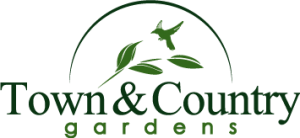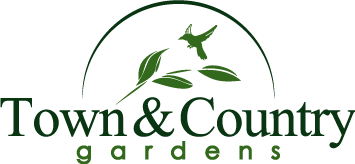October Gardening Check List & Tips
October Gardening Check List & Tips
Vegetables
- Remove spent vegetable plants. If they are free of insects and disease, spade or rototil them into the soil; otherwise dispose of them so they don’t infect your plants and soil.
- Apply T &C Humates, Soil Sulfur, and Soil Enhancer or other compost to soil and turn under.
Roses
- Winterize roses when the ground begins to freeze- typically late October or early November. Water well, then place a rose collar around each rose and fill with Soil Pep or other dry mulch.
Flowers
- Spring flowering bulbs such as daffodils, tulips, crocus and hyacinths can be planted anytime in fall before the ground freezes. Fertilize when planting with Bone Meal.
- Sow wildflower seeds in October for quicker germination and blooming in spring.
- Plant fall-blooming perennials like asters, mums, and fall sedum in planters for fall color.
- Dig up summer flowering bulbs (gladiolas, begonias, and dahlias) once frost has killed or damaged the foliage. Store in a cool, dark, frost-free place.
- Divide iris, oriental poppies, bleeding heart, peonies, and daylilies. Share with your friends or replant in a new space in your yard and water well.
Fruit
- Clean up any fallen fruit under your trees. The dropped fruit can harbor insects that will harm next year’s crop.
- Peaches will freeze when the fruit temperature reaches about 30 degrees, apples when the fruit temperature drops below 28 degrees. If the fruit freezes, wait until they thaw and then harvest and use or process them as soon as possible.
Lawns
- Apply T&C Lawn Winterizer (Step 4 of our 4-step lawn program). It can go on anytime in October or November, but the best time is around the time of your last mowing.
- Mow your lawn as short as possible on your last mowing of the season.
- As the days shorten and the weather cools reduce the frequency of lawn irrigation.
- Apply “I Must Garden” Mole and Vole repellant to keep voles from tunneling in your lawn this winter.
- Before temperatures reach the low twenties winterize your sprinkler system by turning off the water supply and draining or blowing out the system with compressed air.
Trees & Shrubs
- Hardy trees and shrubs can continue to be planted until the ground freezes. Be sure to use T&C Soil Enhancer and Fertilome Root Stimulator when planting.
- Fall feeding of trees and shrubs can begin in late September or October when there is no danger of encouraging new growth before winter. We recommend Save-A-Tree or T&C Tree & Shrub Food.
- Prune trees and shrubs after leaves have fallen.
- Wrap young tree trunks with white breathable tree wrap or tree guards.
- Wrap tender evergreens such as arborvitae and Alberta spruce with burlap to protect from winter wind and sun. Young trees are especially vulnerable to winter damage.
Bird Feeding
- Take down any hummingbird feeders before hard frost to prevent breakage.
- Place bird feeders near windows for a show all winter.
- Stock up on black oil sunflower, suet, and thistle seed for feeding the birds this winter.
- Put suet feeders out now that it’s cooler. It’s a great winter source of energy for birds.
- Put a heated dish or heated birdbath in your yard to keep a supply of water open for the birds. Water will draw as many birds to your yard as feeders.
General
- Remove compost from bins and spread on the garden and flowerbeds.
- Stock up on indoor plants to bring Mother Nature inside for the winter.
- Put Christmas cactus on a cool porch where the cold temperatures will promote flowering.
- In early October begin giving any poinsettias saved from last year 12 to 14 hours of total darkness by placing in a dark room or covering with an opaque box each night.
- Cut foliage off spent amaryllis, remove bulbs from pot and store in refrigerator a minimum of six weeks. Then replant about 8 weeks before you want them to bloom.
- Remove plants from porch pots and window boxes. Create a fall and or winter arrangement with pine boughs, dogwood branches, etc. for a nice winter bouquet.
- Before first hard frost, remove hoses from hose bibs to keep faucets and pipes from freezing. They don’t self drain when the hose is attached.
- Prepare lawnmowers and other tools for storage.
- Clean and store BBQ grills and patio furniture.
- Put up Christmas lights before the snow flies. It’s not only more pleasant, but safer.




